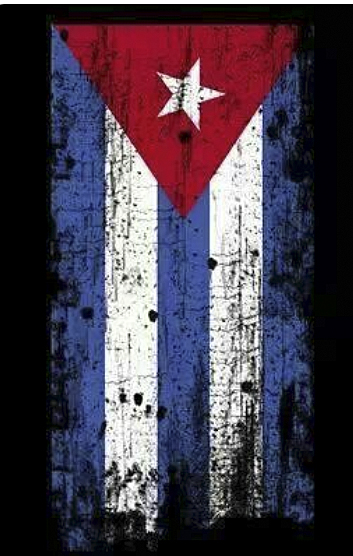
- Articles
Cuban Espionage — The Saga of Florentino Aspillaga and the Assassination of JFK
In the book, Castro’s Secrets: The CIA and Cuba’s Intelligence Machine (2012), author Brian Latell, a professor, scholar, and retired CIA officer who had been active in foreign intelligence for 35 years, relies extensively on information provided by half a dozen Cuban defectors and several retired CIA officers. However, the most intriguing and reliable revelations (i.e., pure facts without any embellishment or speculation) come to light from Florentino Aspillaga Lombard (“Tiny”), the most knowledgeable and valuable foreign intelligence officer to ever defect from Cuba’s powerful Directorio General de Inteligencia (DGI).
1987: The Cuban Year of the Spy
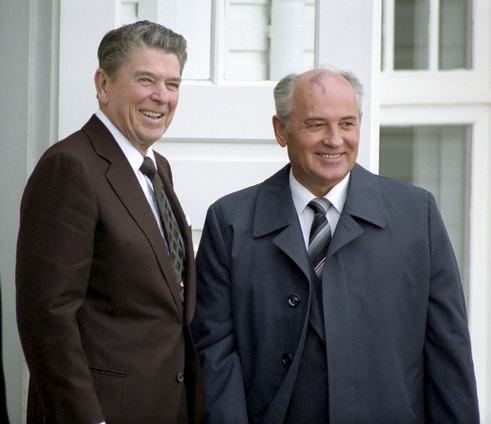
Tiny Aspillaga defected that fateful summer in 1987 in the midst of the turbulent and historic years of Soviet leader Mikhail Gorbachev’s Glasnost and Perestroika — but still four years before the total collapse of the Soviet empire. Aspillaga had served with distinction in the elite ranks of the DGI and had even received a personal commendation from Fidel Castro. After Aspillaga began working with the CIA, he immediately exposed dozens of Cuban double agents, who had infiltrated American intelligence, political and cultural institutions, as well as various anti-Castro groups. Many of these Cuban double agents had been operating for over two decades, inflicting untold damage on the U.S. The most highly placed double agents were handled personally by Fidel Castro, who, for nearly fifty years, acted as Cuba’s supreme spymaster!
Ironically, the legendary American counterintelligence (CI) chief, James Jesus Angleton, was not involved in tracking these Cuban operations, which were outside his purview. And unfortunately, those in the CIA who had jurisdiction in the 1960s and 1970s did not take the threat seriously, contemptuously dismissing DGI operations as those of a third world country and unworthy of their time or effort. They would pay dearly for this negligence and cavalier attitude.
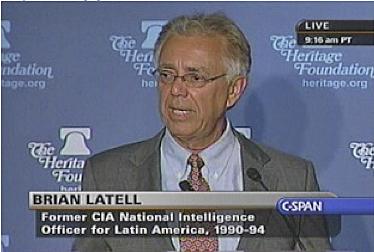
In his book, Brian Latell describes the largest and longest lasting double agent operation in the annals of world espionage: Four-dozen double agents were involved as spies. They had initially posed as “dangles,” or attractive baits (carnada), and had been deceptively recruited by U.S. intelligence. The moles subsequently spied for Cuba in ongoing operations over a period of many years. Aspillaga exposed the double agents in the summer of 1987, revealing the magnitude of the deception, and the FBI then rolled up the spies. Characteristically, Fidel Castro denounced Aspillaga and put a price on his head. Then Castro began a propaganda counterattack, authorizing the publication and distribution of a series of newspaper articles and well-done documentaries designed to taunt and humiliate the CIA over the magnitude of Cuba’s deception and to publicize the CIA’s calamitous counterintelligence failures. The full effect of the humiliation was only limited by breaking news of the Iran-Contra affair, which diverted the attention of the U.S. media. Nevertheless, it inflicted deep wounds to the morale of CIA officers.
There were two assassination attempts made against Aspillaga that are vividly recounted by Latell in this book. In both attempts, Fidel Castro utilized Aspillaga’s former best friends. One attempt was made in London in 1988 at point blank range. The other was a failed sniper attempt made by Miami-based, Red Avispa (“Wasp”) agents, many of who were arrested a year later by the FBI in September 1989.
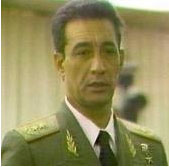
Following Cuba’s year of the spy (1987), when six major defections took place including that of Aspillaga and the much-celebrated Cuban hero, General Rafael del Pino, Castro ordered a devastating purge of both the Cuban Interior Ministry and the island’s secret police. In Stalinist fashion, General Arnaldo Ochoa, the most decorated Cuban general and hero of the African wars, and Antonio de la Guardia, an intrepid intelligence colonel, were shot following a kangaroo trial that convicted them of the trumped-up charges of drug trafficking. Jose Abrahantes, the long-time Cuban Minister of the Interior, was also arrested but died in custody, ostensibly of a heart attack. Most poignant and characteristic of Fidel’s vindictiveness is the story of Ochoa and Ulises Rosales. General Rosales, whose life had been saved by Ochoa during a guerrilla war in Venezuela, was forced to confront his former friend and vote for his execution.(1)
“Many of those purged or executed in 1989,” writes Latell, “had been attracted to the reform movement then flowering in the Soviet bloc. It was no coincidence then that the Cuban purges began within days of the Tiananmen Square massacre of pro-democracy movement demonstrators in Beijing.”(2)
Aspillaga’s defection was a crushing blow to Fidel personally and to Cuban foreign intelligence generally, even affecting internal G-2 operations. The head of Cuban counterintelligence in Havana committed suicide with a pistol shot through his mouth. But make no mistake about it, despite these losses, Cuban foreign intelligence remains probably to this day an agency without peer in the cloak and dagger, lethal game of human intelligence (HI) and counterintelligence (CI) in the world. And also in judging the CIA, we must remember that totalitarian police states have astronomical advantages over the foreign spy agencies of the free world that frequently go unnoticed.(3) These advantages usually include a vast network of informants, where everyone is afraid of and snitches on everybody else; citizens have no constitutional or civil rights; national identity cards are mandated and required for travel (with concomitant restriction of movement for the foreign spies as well as the citizens); unlimited resources are available for the state spies and secret police, etc. Cuba had all of these advantages, as well as superior spycraft led by Fidel himself, a brilliant but evil spymaster with unlimited power, the supreme autocrat.
Aspillaga’s defection in 1987 and his revelations proved and subsequent investigations corroborated that the CIA had been outclassed and humbled by the Cuban DGI in spycraft. Although “the Americans had been careless, overconfident, deceived in ways that they thought unimaginable,” according to Latell, “none had been dishonest or disloyal.”(4) Nevertheless, the Aspillaga defection turned the table on the Cubans and counterintelligence began to favor the U.S. Aspillaga in turn became a marked man by Fidel Castro and the DGI. He remains so to this day.
Fidel Castro’s “Armageddon Letter” During the Cuban Missile Crisis
Latell reveals the existence of and discloses the content of Castro’s Armageddon letter of October 22, 1962 (the last day of the Cuban Missile Crisis) to Soviet Premier Nikita Khrushchev. In that letter, Castro advocates a preemptive nuclear strike against the U.S., using not only the island’s strategic and tactical assembled missile force but also the USSR nuclear arsenal. Khrushchev not only turned him down but the emotionally charged, diabolical impetuosity of the Cuban leader frightened and prompted Khrushchev to immediately cave in to JFK’s demands.
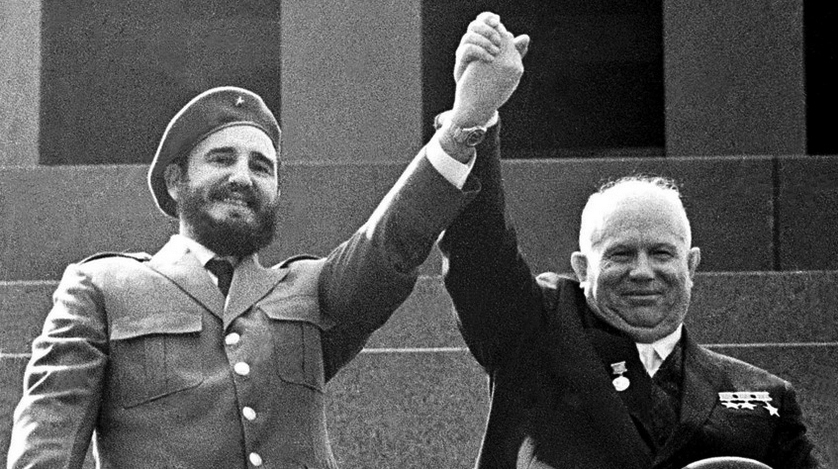
We must assume Castro was not aware that the U.S. had a significant nuclear superiority over the USSR. The “missile gap” that existed in 1962 was stacked in U.S. favor within the tripod of strategic nuclear forces — the hardened silos of ground intercontinental missile launchers, air bombers, and submarine forces. Khrushchev knew this and was also cognizant that the U.S. had been informed of this fact too because of the revelations of Soviet GRU Colonel Oleg Penkovsky, who had been a double agent for the British and Americans for 18 months prior to his arrest by Soviet authorities and his execution in Russia.(5) Castro must not have fully surmised the apocalyptic dimensions of what he proposed to the Soviet premier, for while it was true the U.S. would have suffered huge loses, the communist world would have been vaporized from the retaliatory response of our surviving nuclear forces. Surely, Dr. Strangelove would have been transformed from the diabolical and fictional character in cinema to a real and gruesome incarnation in the person of Fidel Castro.
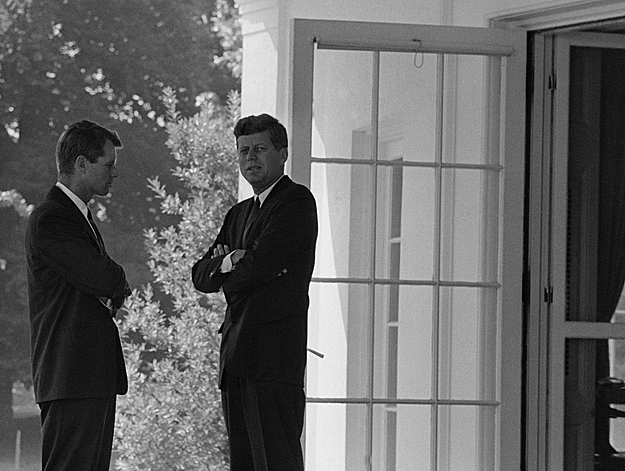
In great detail, Latell reveals the immense pressure President Kennedy and his brother Robert, the Attorney General, brought to bear on the CIA in order to continue their obsessive but futile covert war against Fidel Castro, which resumed in the Spring of 1963 several months after the Cuban Missile Crisis and did not end until November 22, 1963, the day of JFK’s assassination. It was futile because Fidel via his DGI double agents and their superb spycraft had been aware all along of the clandestine CIA operations, including continuing plans for a coup and “regime change,” as well as Castro’s assassination. The intended leader of the coup and assassin of Fidel Castro was to be Comandante Rolando Cubela (CIA code name AM/LASH), a hero of the Revolution, but according to Latell and unbeknownst to the savvy CIA planners in the Florida CIA station (JM/WAVE) — i.e., advisor Sam Halpern, Chief of Operations Desmond (Des) FitzGerald, and the case officer for Cubela, Nestor Sanchez — Cubela was himself a double agent working all along for Fidel Castro and Cuban intelligence.(6)
The vital point was that Fidel was aware that the Kennedy brothers were playing a precarious double game with him, a life and death struggle, despite the peaceful overtures conveyed to him through other channels. These overtures with the wishful thinking that they would lead to rapprochement took in many respected figures, including Kennedy’s advisor and ghostwriter, Ted Sorenson, and Robert Dallek, a Kennedy biographer.(7)
Prior Knowledge of Kennedy’s Imminent Assassination
Latell dismantles the myth of impending reconciliation between Castro and Kennedy after the Cuban Missile Crisis that was supposedly cut short only by Kennedy’s assassination. Fidel told his guest, the prominent French Journalist Jean Daniel who had doubled as Kennedy’s emissary, that he would never foreswear his Marxist beliefs, renounce his allegiance to Moscow, or abandon the exportation of revolution to other countries in Latin America or the rest of the world. Fidel would not even compromise with Kennedy’s suggestion that he become a nonaligned, independent, communist leader like Tito of Yugoslavia and break away from the Soviet bloc. The ray of light that many journalists and normally well-informed people refused to see because they were taken in by the dark shadows of disinformation — namely that the two leaders respected each other and were close to reconciliation — was a myth and not reality. Behind the scenes both leaders continued to plot against each other in the worst traditions of the cold war. In the end, from the 1960s to the years prior to 1987, Fidel prevailed because of the superiority his DGI had over the CIA in spycraft, human intelligence, and general aforementioned advantages that an island police state possesses over those of the free world.
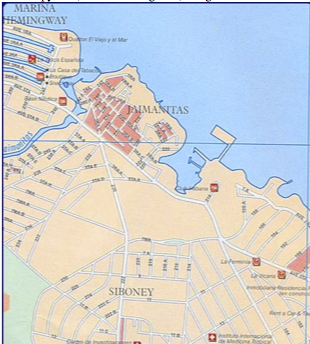
In the penultimate chapter, “Conspiracy of Silence,” Latell relates and elaborates on the most likely scenario as to what transpired in the Cuban connection to the Kennedy assassination. Latell stands on the shoulders of those who have contributed important pieces of knowledge to the puzzle, particularly attorney-investigator Vincent Bugliosi, DGI defectors, and former CIA agents. But the final piece in his jigsaw puzzle is the astounding information provided by Tiny Aspillaga. The super defector revealed that as a young radio operator at Castro’s ultra-secret Jaimanitas listening post on the northern coast of Cuba near Havana, he was suddenly and without precedent ordered to redirect his listening antennas from his usual target the CIA and switch the dials to Texas! It was the morning of November 22, 1963, three hours before the JFK assassination that took place at 12:30 p.m. (Dallas time) on that same day. Aspillaga informed Latell, as he had told his previous debriefers (and had written in his unpublished memoirs in 1990): “Castro knew. They knew Kennedy would be killed.” Latell then goes on to rearrange the pieces of this giant jigsaw puzzle and comes up with a clear, and in my opinion, the most probable version to date of the connection between Fidel Castro and the Kennedy assassination.
Fidel had always insisted publicly that the Cuban government knew nothing about Lee Harvey Oswald until they heard about Kennedy’s assassination in Dallas on November 22, 1963. But this declaration has been proven to be a lie. Oswald had visited the Cuban embassy in Mexico City several times in September 1963, attempting to obtain a visa to enter Cuba. He allegedly dated the Mexican receptionist at the embassy Silvia Duran, with whom he had become acquainted during his visits. What had not been known was that Oswald had become belligerent and stormed out of the embassy making a threat to kill Kennedy. Fidel Castro admitted to Jack Childs, who he trusted as an old Bolshevik, a friend of Khrushchev, and official in the American Communist Party (along with his brother Morris Childs), that “Oswald stormed into the embassy, demanded the visa, and when it was refused to him headed out saying, ‘I’m going to kill Kennedy for this.’ ” What Fidel did not know was the Jack Childs and his brother Morris Childs were in fact FBI master spies, American double agents. This information was too sensitive to be discussed at the time of the Warren Commission in the mid-1960s and the House Assassination Committee in the late 1970s and was filed as Top Secret in order to protect the two brothers and their wives who were still in active service as FBI double agents.(8)
Latell has convinced me that Fidel knew of the imminent assassination because as Cuba’s supreme spymaster, Fidel had been apprised of Lee Harvey Oswald’s threat to kill Kennedy following Oswald’s visit to the Cuban embassy in Mexico City in September 1963. The experienced senior DGI agents posted at the Cuban embassy at that time plausibly used calculated human psychology to plant the seeds and “winding up” the distraught Oswald without necessarily having to formally recruit him for the assassination mission. Oswald did not need further encouragement. He had already been “wound up” by the barrage of vitriolic speeches Castro made denouncing, attacking, and warning Kennedy and the CIA; all through October and November, and up to the time of the assassination in Dallas, Castro had been hammering, warning JFK. Even without the encouragement of the Cubans, it is inconceivable that at least Castro had not heard about the threat.
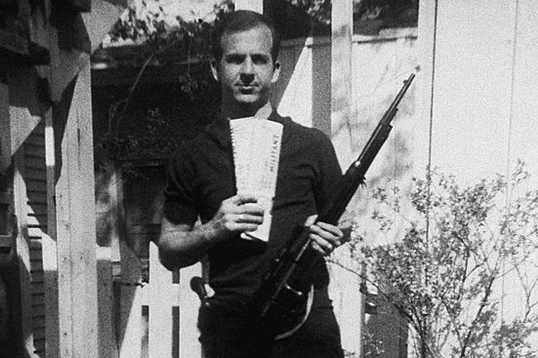
The warnings were not being heeded, and so Fidel Castro, through his DGI agents in the Cuban embassy, could have instigated Oswald to proceed with his threat to shoot Kennedy, before the CIA and Rolando Cubela would have a chance “to get” Castro. Fidel had the perfect alibi at his Varadero beach resort home, where on November 22, 1963 he was conveniently entertaining Kennedy’s friend and envoy, Jean Daniel. Ominously at the same time, CIA Chief of Operations Des FitzGerald, acting as Robert Kennedy’s personal (and family related) envoy, was meeting with Cuba’s would-be military coup leader and Castro assassin, Comandante Cubela, to add the final touches to their plot. Castro knew all about this too, just as he had known about previous arrangements made in the first week of September in Porto Alegre, Brazil, where Cubela’s conversations with the CIA were probably monitored via secret listening posts.
Meanwhile in Havana, Fidel Castro chose a gathering at the Brazilian embassy on Sunday, September 8, to announce his warning to Kennedy and the CIA via his chosen American journalist, Daniel Harker. Castro admonished the Americans: “We are prepared to fight them and answer in kind. U.S. leaders should think that if they are aiding terrorist plans to eliminate Cuban leaders, they themselves will not be safe… United States leaders would be in danger if they helped in any attempt to do away with leaders of Cuba.”(9)
KGB and Mafia Connections
In my opinion, there is now plenty of evidence, strangely as it might be, that neither the KGB nor the mafia were directly involved in the plot to kill Kennedy.(10)
Lee Harvey Oswald may have made contact with the Cubans while stationed at Camp Pendleton, California, and could have provided top secret information to the Soviets in 1959 when subsequently stationed at the Atsugi Air Force Base in Japan, making it possible for the Russians on May 1, 1960 to shoot down the long-range, high-altitude, U-2 spy plane manned by Francis Gary Powers as it flew over the USSR.(11) Yet, irregular as it may seem for the KGB, there is no evidence that the Soviets used Oswald as an intelligence source after that instance, not even after he defected and lived in the USSR until 1961.(12-13)
Thus, the Soviets apparently did not trust the unstable American defector Oswald. And there was no time or need for Fidel to involve the Soviets anyway. This was his own operation, untraceable and with plausible deniability — even if Oswald had lived and had been put on trial for his crime!
For their part (and this is solely my personal opinion and not discussed in Latell’s book), the mafia godfathers in New Orleans, Miami, Dallas, and Chicago may have thought that the mafia was involved in the assassination. The bosses had been fuming and letting their underlings know just how ungrateful the U.S. President and his brother, the Attorney General, had been acting, betraying the mafia and turning against its bosses. After all, they had helped Joseph Kennedy by seeing that his son JFK won the state of Illinois in the 1960 Presidential Election, and now Robert Kennedy had ungratefully declared war on the mafia, hunting down organized crime figures without mercy.
The Attorney General’s legal war against the mafia continued, even during the second stage of the covert war against Castro — i.e., Operation Mongoose (1961-1962) — when the mafia had been asked to help with the assassination efforts against Fidel.(14) The mafia was still on the run, despite “the services” it had rendered via Johnny Roselli of Chicago and the questionable information provided by Santos Trafficante of Florida. Trafficante may have still been a friend of Fidel from their Havana days. In 1959, Fidel had allowed Trafficante to leave Havana for Miami with his casino money, and after providing further services in the South Florida-Miami community, Trafficante ended up in Tampa, where he remained the long time (and tight-lipped) crime boss until his death in 1987. There were also the mafia godfathers Sam Giancana of Chicago and Carlos Marcello of New Orleans, both of whom came to hate Robert Kennedy with a passion, and they had frequently not minced words about their hatred for both Kennedy brothers because of their ingratitude and treachery.(14-15)

I am convinced that the mafia leaders could have convinced themselves of their legendary reaching power and thus could have suspected their own indirect involvement in the JFK assassination. in such a case it would have been reasonable to suspect that they could have used the mobster and nightclub owner, Jack Ruby, to kill and silence Oswald, the supposed “patsy.” Likewise, many of these mafiosos who had been involved in the ill-fated Mongoose Operation were later themselves fatally silenced, including Johnny Roselli, the friend of the legendary “American James Bond,” CIA Chief Bill Harvey, and the flamboyant and outspoken Chicago boss, Sam Giancana. To send a clear message and to remind and warn others about enforcement of the mafia code of silence, Roselli and Giancana were both murdered in gruesome, gangland style. Marcello died in Louisiana of Alzheimer’s disease in 1993. Trafficante never talked. There were no leaks. Nevertheless, FBI wiretaps of the conversations of all of these mafiosos did not reveal any evidence of their involvement in the JFK assassination.
I have also come to believe Oswald did the shooting alone, despite the objections to the controversial “magic bullet” theory and the highly disturbing Zapruder film, and my own long-time, previously held belief that there were other shooters. Oswald did it all with the blessings of the infamous DGI and ultimately Fidel Castro.
I recommend Latell’s book for all readers interested in Cuban intelligence during the Cold War, Fidel Castro, the CIA, and the Kennedy assassination, despite a couple of quibbles; one has already been mentioned and that is the author’s accusation and his complete certainty that Cubela was a double agent working for Castro. Latell has not convinced me, and I continue to disagree with his assessment for reasons I have already written about.(10,16) My second quibble is the paucity of illustrations. There were many photos of American heroes and miscellaneous villains I would have liked included. I have added some of those photos to this essay. Read Latell’s book. It’s a real cliffhanger!
References and Notes
1) Latell B. Castro’s Secrets: The CIA and Cuba’s Intelligence Machine. Palgrave MacMillan, New York, NY, 2012, pp. 77-78. Ochoa had also saved Che Guevara’s life in the Congo adventures of the 1960s; see Faria M. Cuba in Revolution: Escape From a Lost Paradise, Hacienda Publishing, Macon, GA, 2002, pp. 250-251; and Faria M. “Cuban War Criminal Touring U.S.” Newsmax.com, November 18, 2002.
2) Latell, p. 38.
3) For those who may require comprehensive reference citations for this opinion, I recommend the old classic The KGB: The Secret Work of the Soviet Secret Agents by John Barron (1974), and The Gulag Archipelago by Alexandr Solzhenitsyn (1973) Part 1 — “The Prison System” and Part 2 — “Perpetual Motion.”
4) Latell, p. 214.
5) Schecter JL, Deriabin PS. The Spy Who Saved the World: How a Soviet Colonel Changed the Course of the Cold War. Charles Scribner’s Sons, New York, NY, 1992. This is the story of Soviet GRU Colonel Oleg Penkovsky, who gave his life in the service of the British and American intelligence — and in the cause of freedom during the Cold War. I also mentioned the significance of Penkovsky’s revelations as they refer to atomic secrets in my brief article “Stalin and the Atomic Bomb.”
6) This allegation was not made by Aspillaga or any of the other Cuban defectors. This allegation was not proven to my satisfaction by Latell, nor has it been documented by any other author. Even though I agree with Latell’s overall thesis, I disagree with this important but not essential point. For those who want to read more about Rolando Cubela (CIA code name AM/LASH) and my previous defense of him, or about his background, his courage in battle, his anti-communist politics, and his loyalty to his men in the Student Revolutionary Directorate during the Cuban Revolution, refer to my book, Cuba in Revolution: Escape from a Lost Paradise, Hacienda Publishing, Macon, GA, 2002, pp. 41-45, 73-76.
7) Latell, pp. 211-212.
8) Barron J. Operation Solo: The FBI’s Man in the Kremlin. Regnery Publishing, Washington, DC, 1996, p.113.
9) Latell, pp.173-175.
10) I had previously reached and for years held similar conclusions as those of the scholar Edward J. Epstein in his books, Legend : The Secret World of Lee Harvey Oswald (1978) and Deception: The Invisible War Between the KGB and the CIA (1989). Both works are well-researched, factual, and absorbing read. But after studying closely the newer evidence in the authoritative, and in some cases conclusive, work of Christopher Andrew and Vasili Mitrokhin, I had to revise my thinking as to some of the assumptions made in those two excellent Epstein books. The Mitrokhin Archive is based on the secret files from the KGB foreign intelligence that were published by Professor Christopher Andrew and KGB archivist Vasili Mitrokhin in their monumental books, The Sword and the Shield : The Mitrokhin Archives and the Secret History of the KGB (1999) and The World Was Going Our Way: The KGB and the Battle For the Third World (Newly Revised Secrets from The Mitrokhin Archives; 2005). This information was not available to Epstein at the time his books were researched and written. I also learned a great deal about Oswald’s defection, his sojourn in Russia, and his life in the U.S. after his return, up to the end of his life from the book, Oswald’s Tale: An American Mystery by Norman Mailer (1995), surprisingly an outstanding book. Thus, in re-reading and reviewing Epstein’s book Deception, I expressed my opinion regarding the relationship of the KGB and the Yuri Nosenko Affair to the Oswald-Kennedy connection.
11) Epstein EJ. Legend: The Secret World of Lee Harvey Oswald. Ballantine Books, New York, NY, 1978, pp.116-123.
12) Andrew C, Mitrokhin V. The Sword and the Shield: The Mitrokhin Archives and the Secret History of the KGB. Basic Books, New York, NY, 1999, pp. 225-246.
13) Mailer N. Oswald’s Tale: An American Mystery. Random House, New York, NY, 1995, pp. 39-695.
14) Stockton B. Flawed Patriot: The Rise and Fall of CIA Legend Bill Harvey Potomac Books, Dulles, Virginia, 2006.
15) References are myriad including video-documentaries, books, and Wikipedia entries on the aforementioned mafia figures, but I also found the video-documentary “Mafia — The Definitive History of the Mob in America,” A&E (1993) particularly useful.
16) Faria M. Cuba in Revolution: Escape From a Lost Paradise. Hacienda Publishing, Macon, GA, 2002, pp. 41-45, 73-76.
Written by Dr. Miguel Faria
Miguel A. Faria, Jr., M.D. is the author of Cuba in Revolution: Escape From a Lost Paradise (2002).
This article may be cited as: Faria MA. Cuban Espionage — The Saga of Florentino Aspillaga and the Assassination of JFK. HaciendaPublishing.com, December 13, 2012. Available at: https://haciendapublishing.com/cuban-espionage–the-saga-of-florentino-aspillaga-and-the-assassination-of-jfk/.
This article was featured in RealClearHistory.com on March 25, 2013. Shorter versions of this article also appeared in GOPUSA.com, the Macon Telegraph, and Amazon.com.
The photographs used to illustrate this exclusive essay for Hacienda Publishing came from a variety of sources and do not necessarily appear in Brian Latell’s book, Castro’s Secrets.
Copyright ©2012 Miguel A. Faria, Jr., M.D.